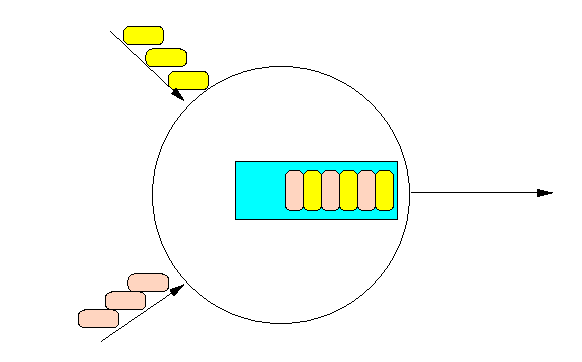CS455 Syllabus
Introduction to Advanced Computer Networking
-
Goal of course
- Tools of performance analysis:
- Markov analysis
- (Simulation)
- Use of Markov analysis to study
network protocols:
- Performance issues/problems in TCP:
- TCP Congestion control
- Synchronized TCP flows
- TCP shortcomings in high speed networks
- RTT unfairness in TCP
- Providing QoS
- Fluid Flow model
- Weighted Fair Queueing
- Self-clocked fair queueing
- Bin-Sort Fair Queueing
- Fairness and delay guarantee
- Dead line guarantee
- Non-traditional networks and their issues
- Multicasting
- Multicast implementation,
- Multicast routing
- Video on demand
- Pyramid broadcast
- Skyscraper broadcast
- Wave Length Division Networks:
- Network architecture
- Virtual networking with Lightpaths
-
Pre-requisite
- Ideally, you should have had a course in "Data Communication"
- I will try not to use any knowledge in such a course;
and if the material requires it, I will insert a short discussion
of the pre-requisite material
- Still, you need some "view" of a computer network - luckily,
everyone uses the internet and have some experience with
using a computer network.
- The following short description gives a high level description
of the network as perceived by a user of the Internet:
- A computer network consists of:
- Router/nodes (cricles) and hosts (squares) interconnected
with wired/wireless links.
- Applications are run on hosts
- Routers forward the packets to the destination (host)
- in this course, you must simple assume that the
routers know where to send a packet so that it
will reach the destination (this is discussed in the undergrad course)
- Packets enroute to a destination will always
encounter some queueing inside every router:
- Routers have some buffer space to hold packets
- Even when every link of the network has the same transmission
speed, packets will still be queued when 2 different packet flows
enter the same router and are sent on the same output link.
- A packet enroute to the destination can:
- arrive intact (the most common case)
- lost
- duplicated (multiple copies are received)

